Porto: Between Spirits and Fishes
Sepetiba is a small neighbourhood located in the west side of Rio de Janeiro, Brazil. Its coastline is fronted by the Sepetiba Bay and it has three beaches. Much sought after until the 1980s for its tranquility and beauty, the beaches in Sepetiba are currently degraded and polluted. Port activities, the dumping of sewage and industrial waste were the main causes for the environmental damage that has profoundly affected peoples' lives.
Recently, the beaches underwent an environmental revitalisation process funded by the government. A batch of sand was extracted from an underwater field in the same bay and subsequently placed over the contaminated mud and sand that had accumulated on the soil throughout the years. The community received a two-kilometre strip of restored sand and could finally go back to reproducing some of their cultural practices.
However, the water remains polluted. The fishermen who earn their livelihood from this struggle to survive with the scarcity of fish, oysters, clams, and shrimp. The government failed to fulfil its promise of treating the sewage dumped into the bay and experts believe that the damage suffered over the years is now irreversible.
Besides fishery, a widespread practice on the beaches of the community are religious rituals. Sepetiba has a considerable number of spiritualist temples focused on Afro-Brazilian cults. Locals and tourists from several parts of the city usually go to the beaches of the community to perform spiritual works and visit the "terreiros" (Afro-Brazilian religious temples) of the region for the practice of Umbanda and Candomble, the most popular religions of African origin in Brazil.
Unfortunately, the persecution of Afro-Brazilian cults has been increasing in Brazil. Spiritualist temples are often under the target of attacks, such as arson fires and depredation of its religious artifacts. Prejudice also affects practitioners of these religions, which tend to suffer different types of aggression, such as insults and physical violence. There are two main causes for this hostility: one is based on endemic Brazilian racism, as these religions have African roots being widely practised by black people; and the other reason is that a fair share of the population believe that the invocation of spirits are manifestations of demons.
It’s in this context of environmental degradation and religious intolerance that the community and its devotees practice their spirituality, taking the beaches as the main place for the manifestations of their faith.
I've returned to the place where I grew up to build an poetic memorial about this land and its elements - the divinities, the waters, the men, and the fishes.
Porto - Between Spirits and Fishes is a story about nature, spirituality and belonging in a place where death, life and magic blend themselves and move through the times and tides.
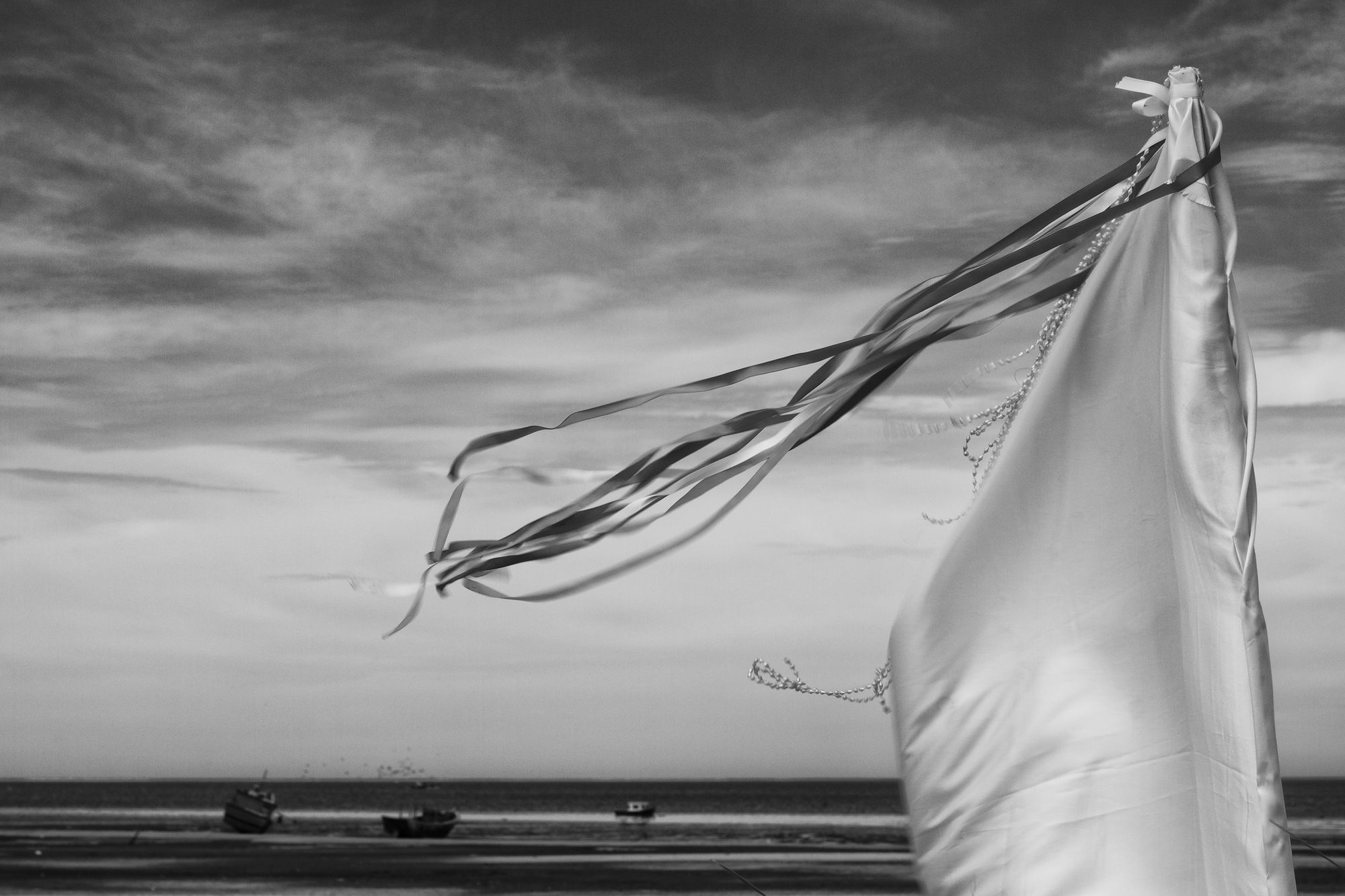
The coast of Sepetiba is 5.8 km long and is divided into three beaches. All the beaches are damaged due to the pollution of Sepetiba Bay. The Bay is highly contaminated with heavy metals coming from industries installed nearby and untreated domestic wastewater.

A horse at the Cardo Beach.

Sepetiba has a considerable number of spiritualist temples dedicated to afro-Brazilian cults. Pots are often offered to the deities in Afro-religious rituals with food inside prepared for Orishas as part of a ceremony. Each Orisha has its favorite offerings, wich may include rice,fruits, flowers or animals.
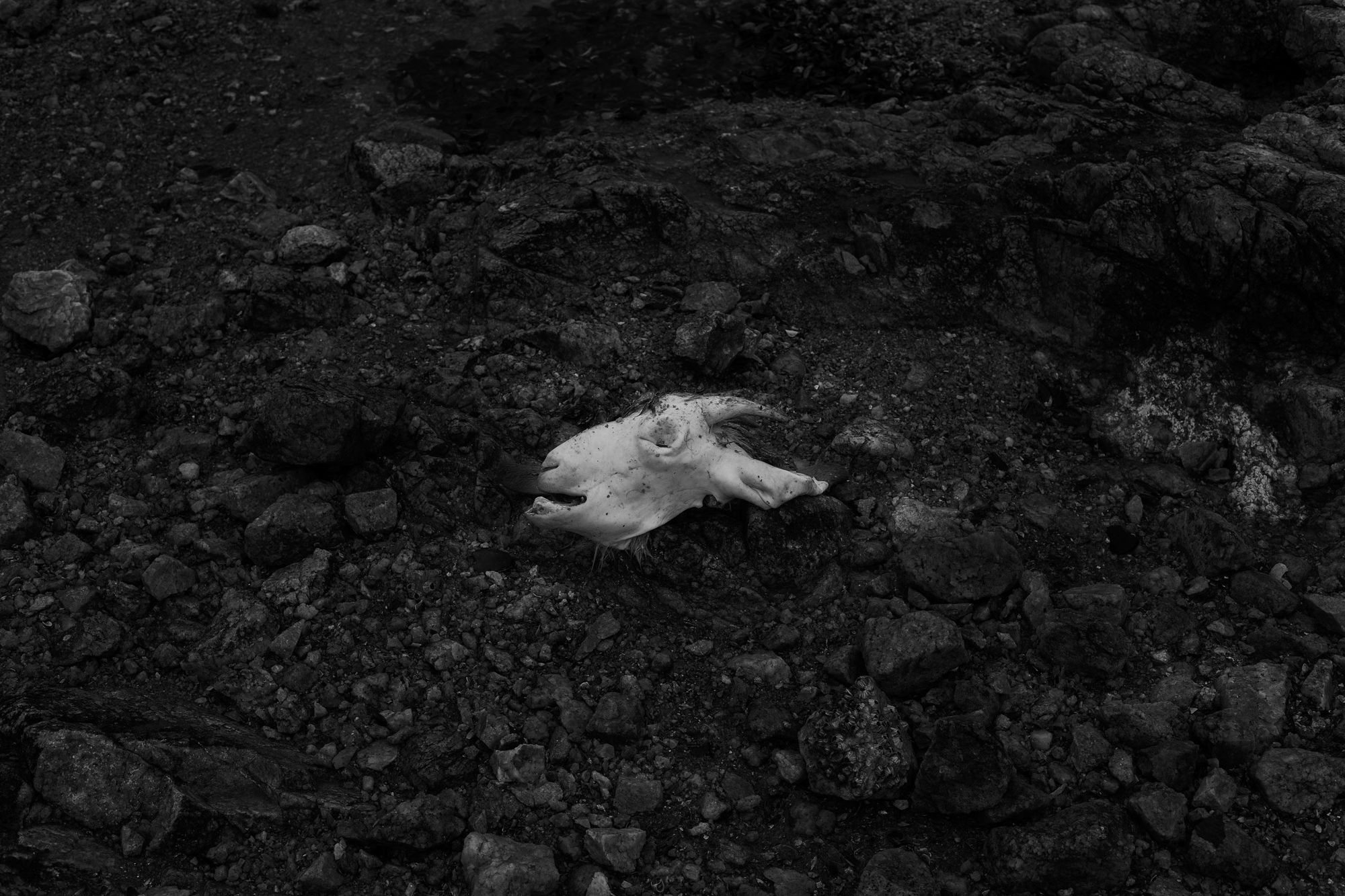
A goat used in a sacrificial ritual found at the Recôncavo Beach.

Women in a possession trance during a spiritual work at the beach. The Umbanda andCandomblé embraces a great variety of spirits that can be incorporated by a medium.
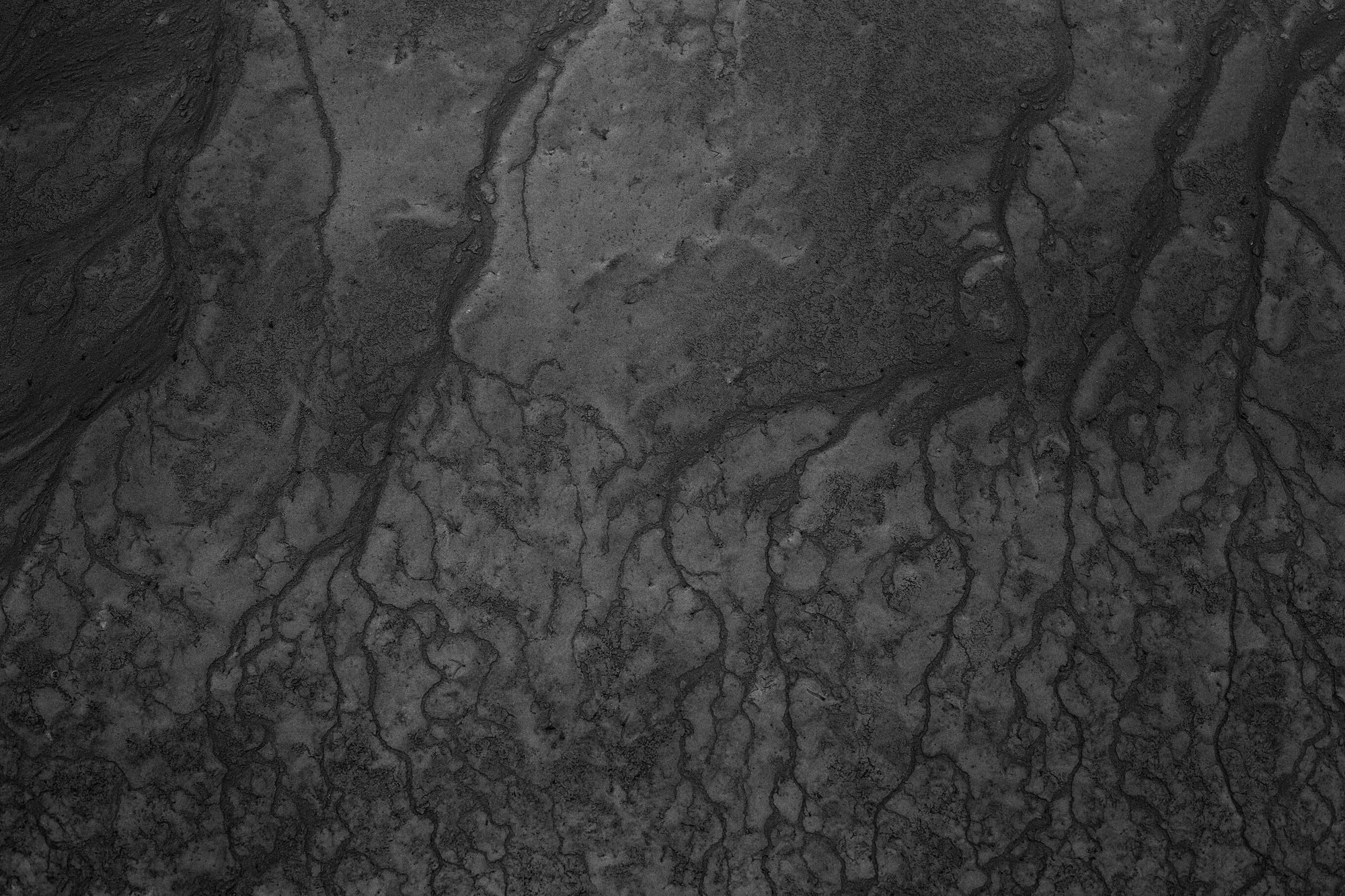
The waters of Sepetiba beaches have a huge concentration of heavy metals such as Cadmium and Zinc. The waste is from a metallurgical industry that operated in a neighboring district.
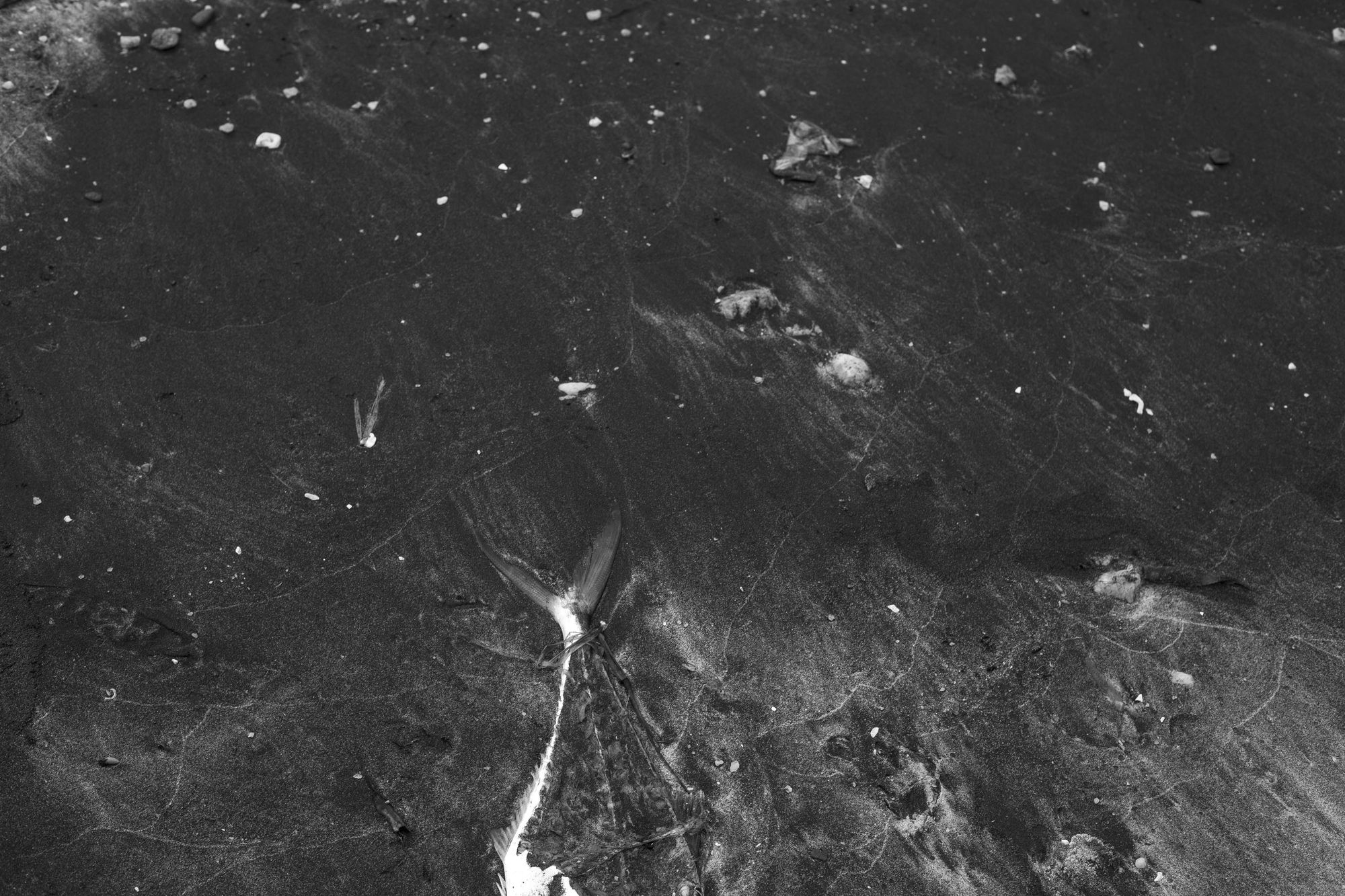
Pollution has considerably reduced the amount of fish, the community’s main source of food and income in the past. The shortage of fishes and the consumer distrust of the local fish forced many of the region's fishermen to seek other ways of earning a living.
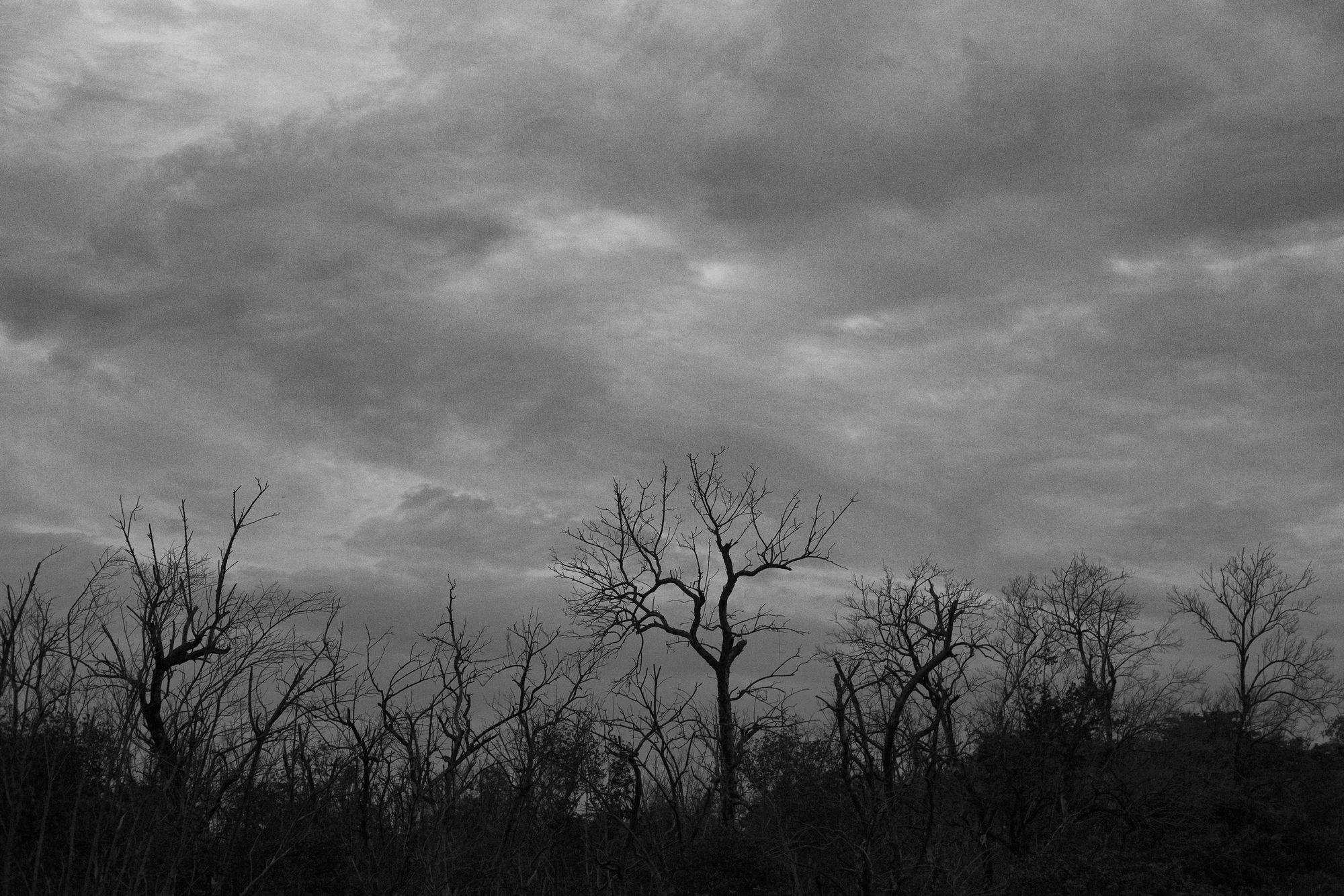
Trees in a mangroove at the Sepetiba Beach.
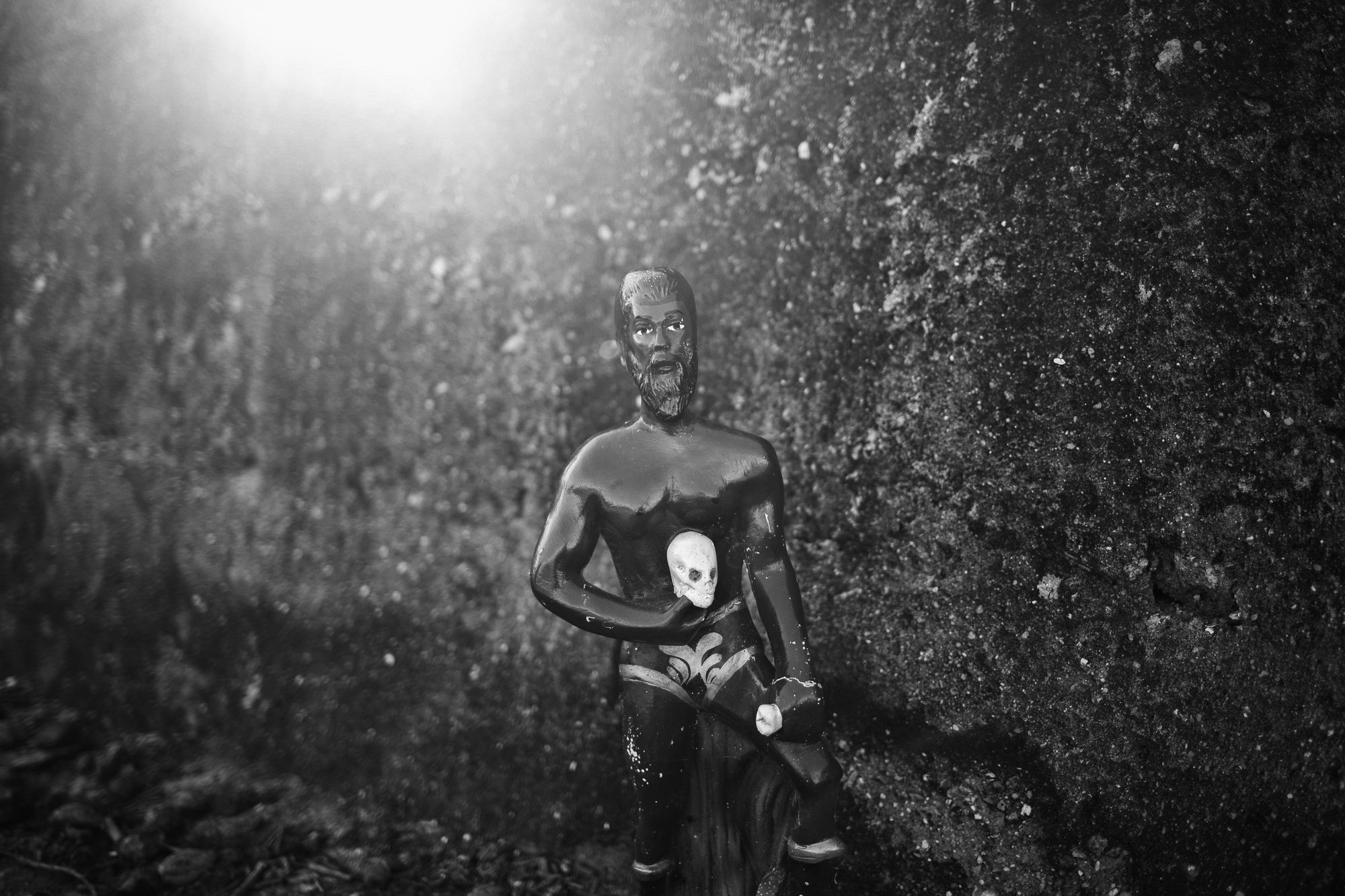
Sculpture of an "Exu" found in the beach. Exu belongs to a lineage of Spirits of Umbanda, a syncretic Brazilian religion that blends African traditions with Catholicism, Spiritism and Indigenous beliefs. He is devoted as the messenger between the material and spiritual worlds.
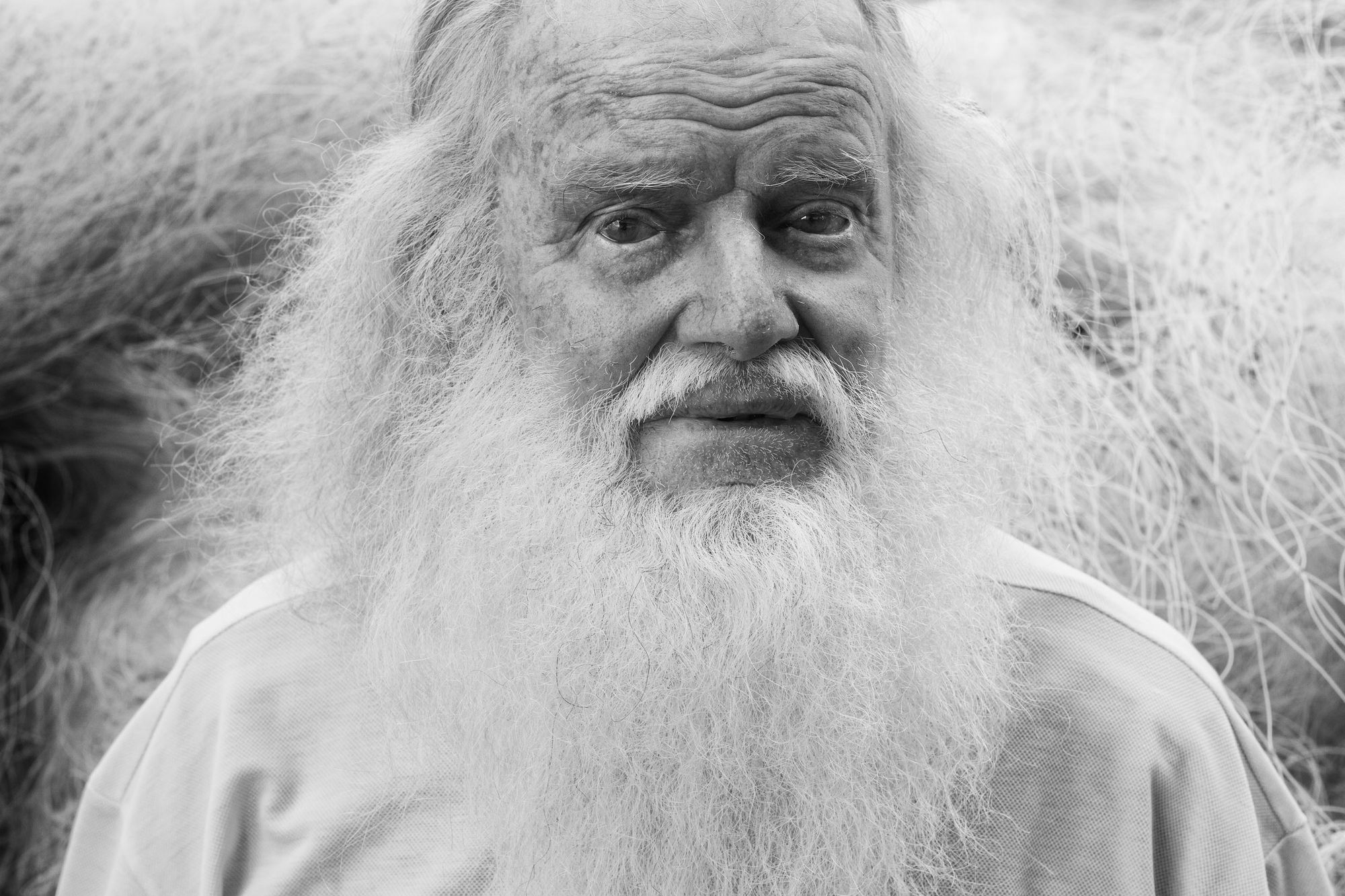
Guardian of nature and a great sage of the local nautical culture, Mr. Erasmo - also known as Velho Homem do Mar (“Old Man of the Sea”) - was one of the oldest and most respected fishermen of the community. He was the first lifeguards of the Sepetiba beaches and dedicated his life to preserve and take care of the local nature. He passed away in March 2016.
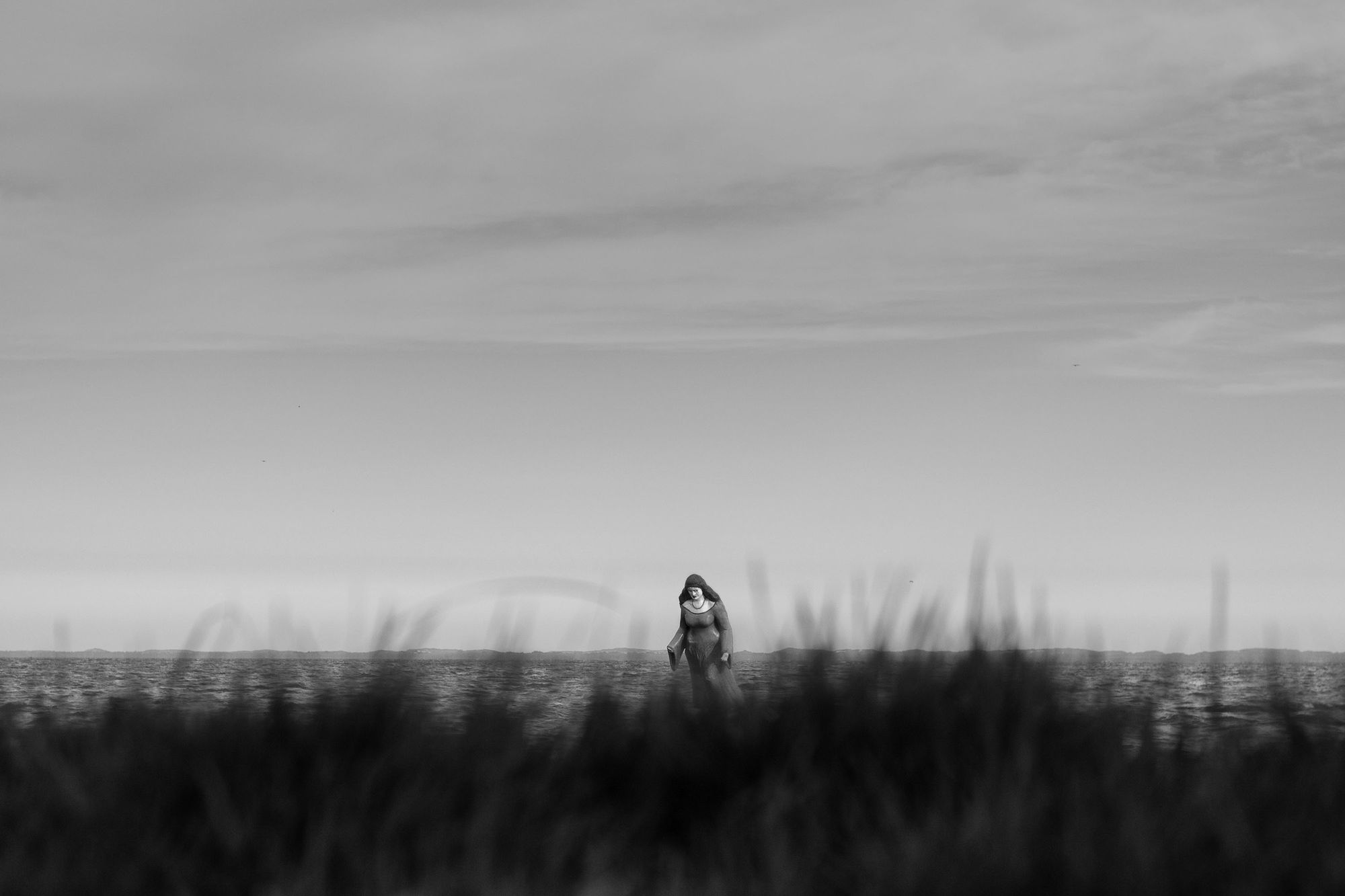
Yemanjá is the most popular afro-brazilian deity in Brazil. Her name derives from the term in the Yoruba language, “Yèyé omo ejá”, which means "mother whose child are fish”. This statue remained in the waters of the beach for decades. Devotees from several parts of the city used to go to Sepetiba to offer gifts and prayers to the saint. The statue was broken in 2012. There are rumors that the statue was destroyed due to a hate crime.

Remains of a fish trap, a rudimentar corral to catch fishes at the Cardo Beach. The fishermen who earn their livelihood from fishery, struggle to survive with the scarcity of fish, oysters, clams and shrimp. The government failed to fulfill its promise of treating the polluted waters and experts believe that the damage suffered over the years is now irreversible.
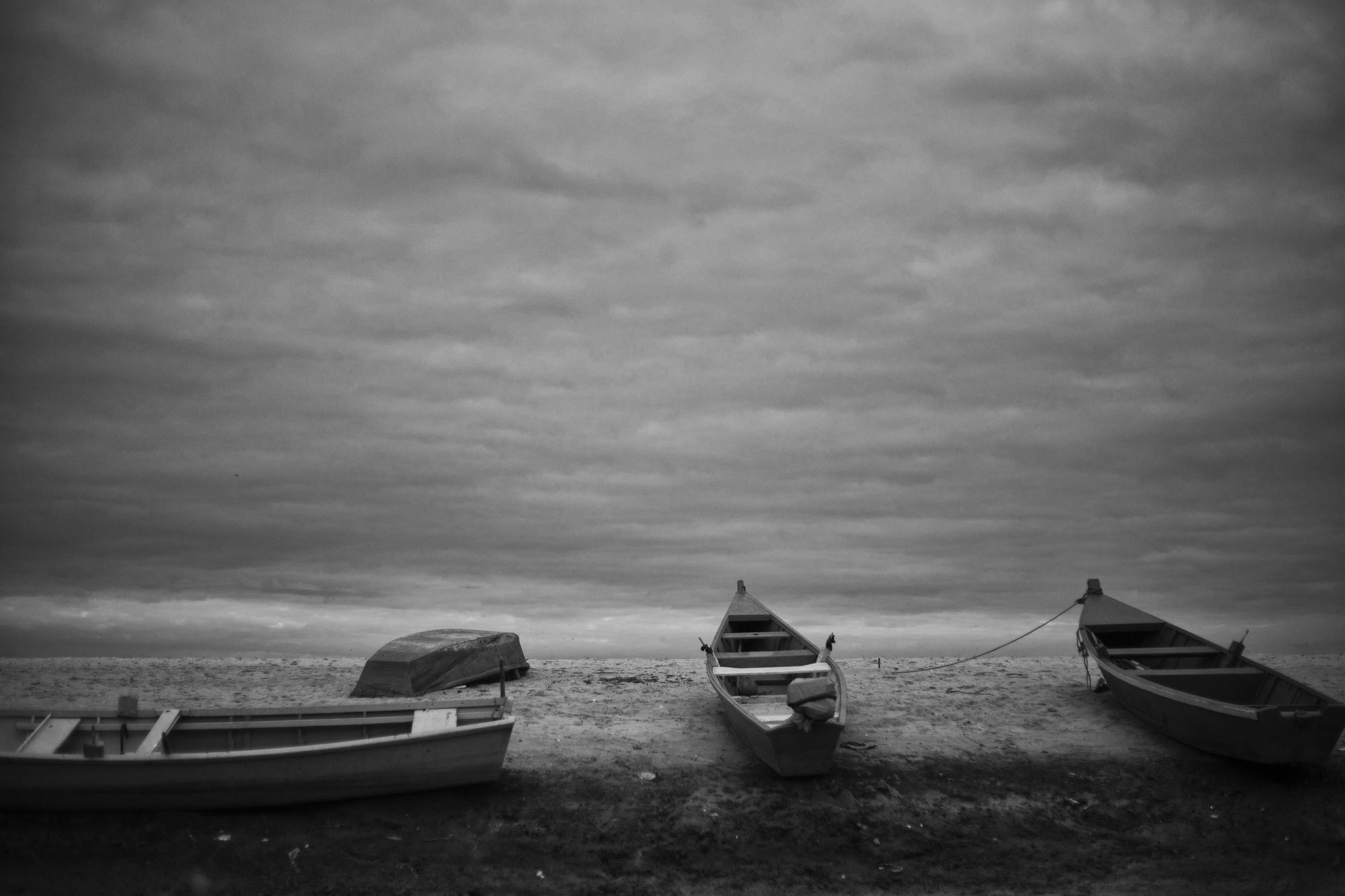
Small boats at the Sepetiba Beach.
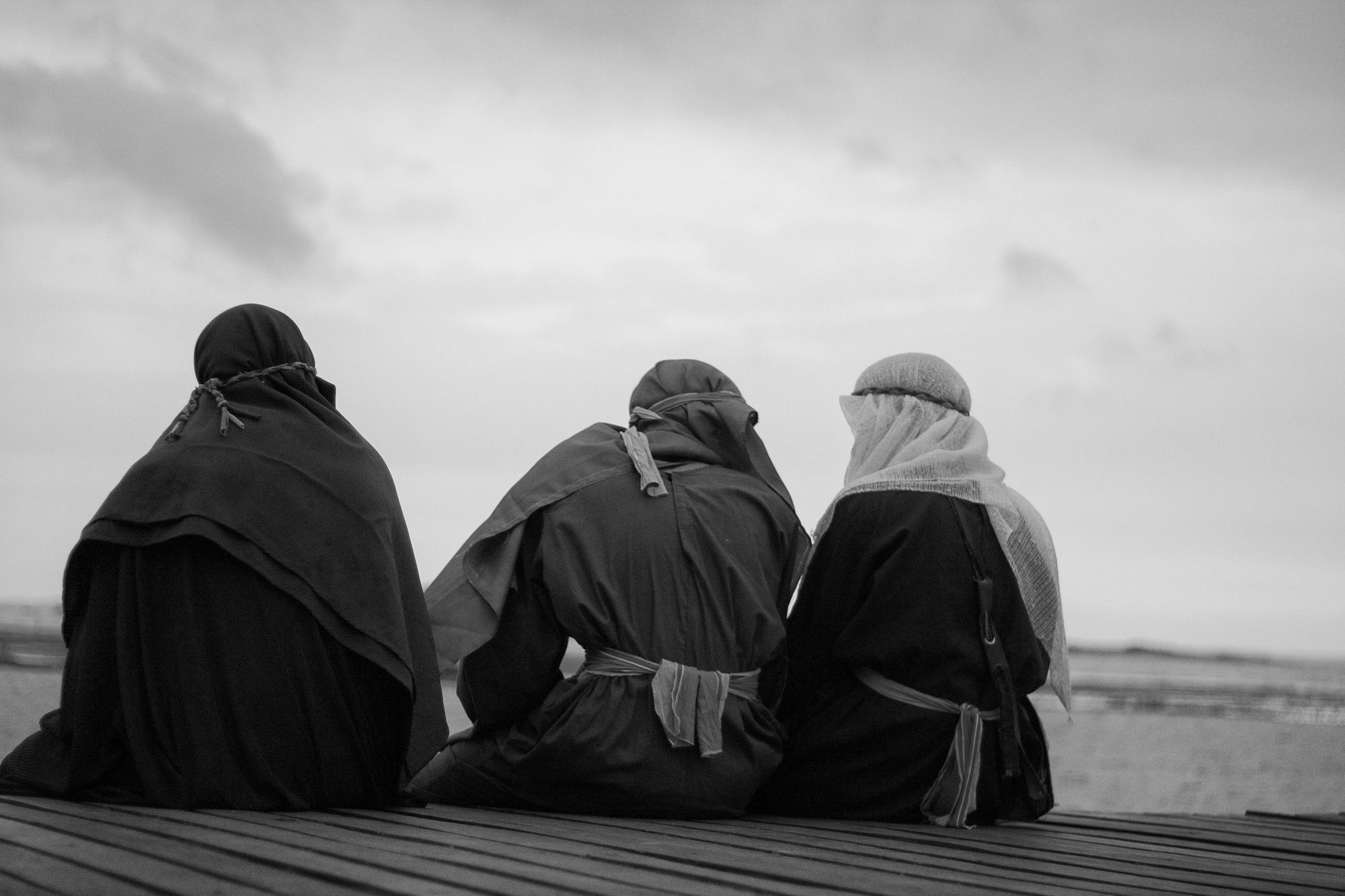
Holy Week festivities in the region involve the staging of Via Crucis and other rituals. The procession ends at the beach. Characters who participated rest on the pier after the presentation.
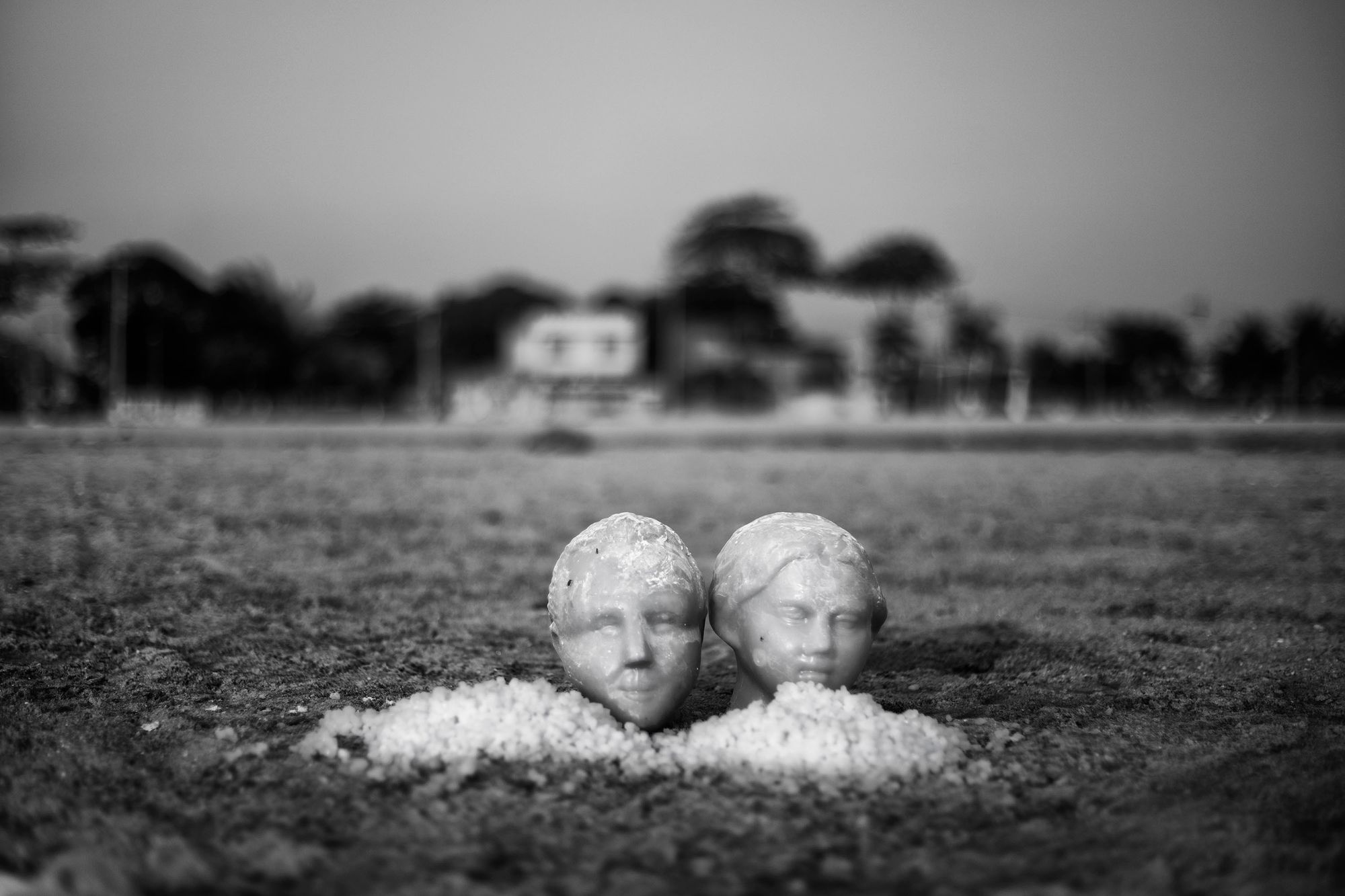
Candles of human figures found at the Sepetiba Beach.
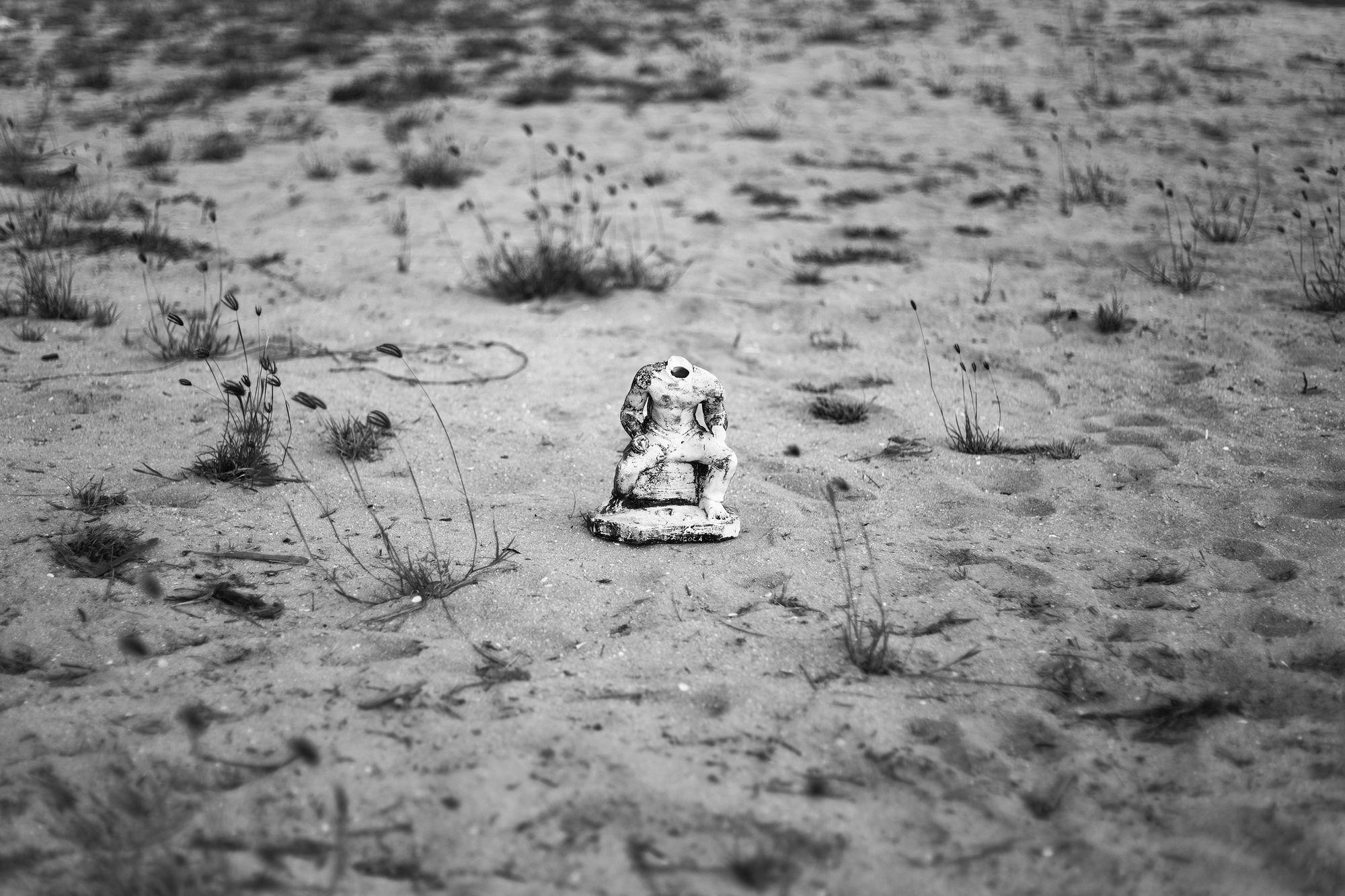
O Preto velho (“Old Black Man) is the Umbanda entity that represents the spirits of elederly African slaves who lived in slave quarters. They are worshipped as the masters of wisdom, humility and kindness.
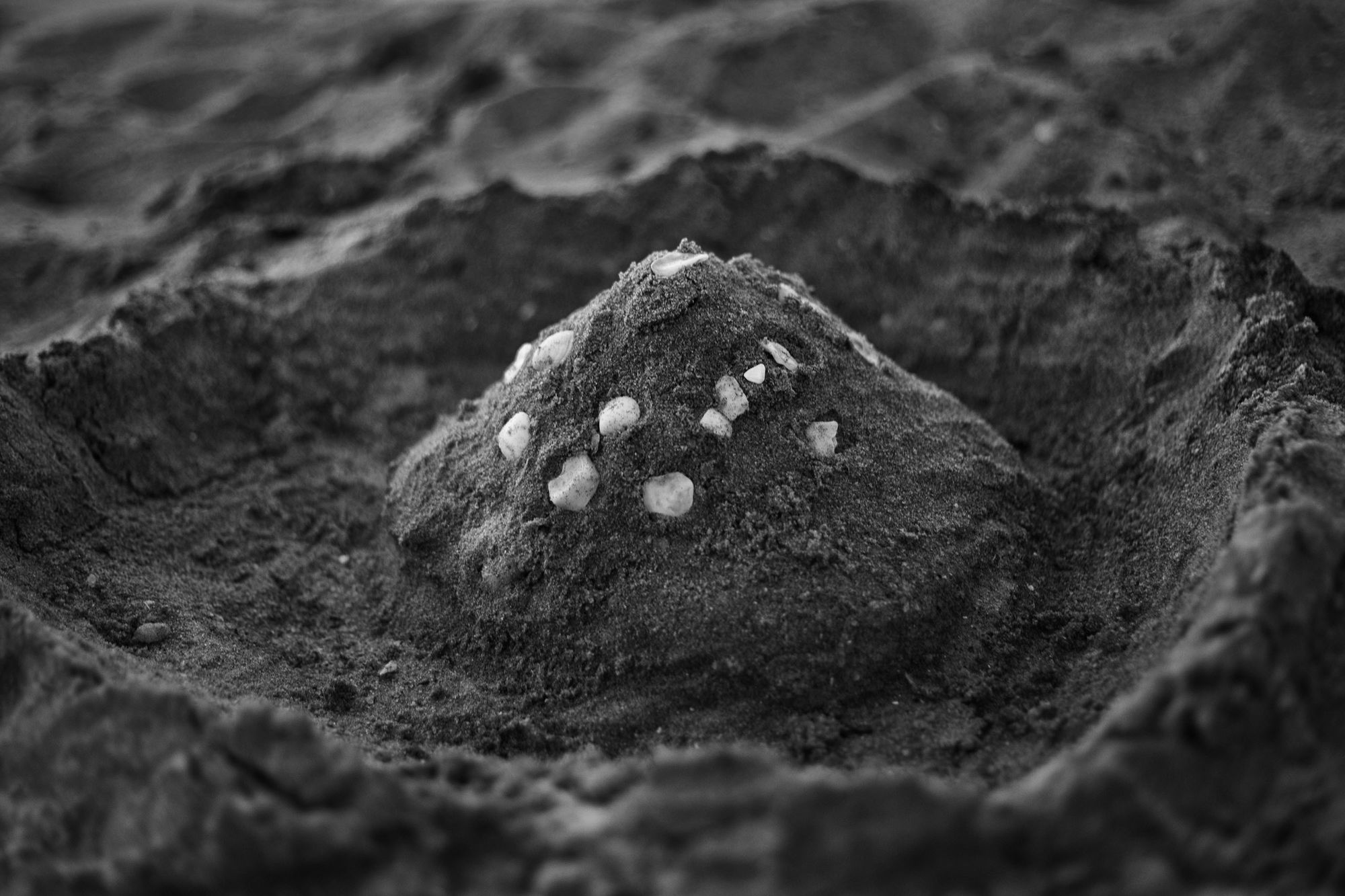
A sand castle found at the Cardo Beach.
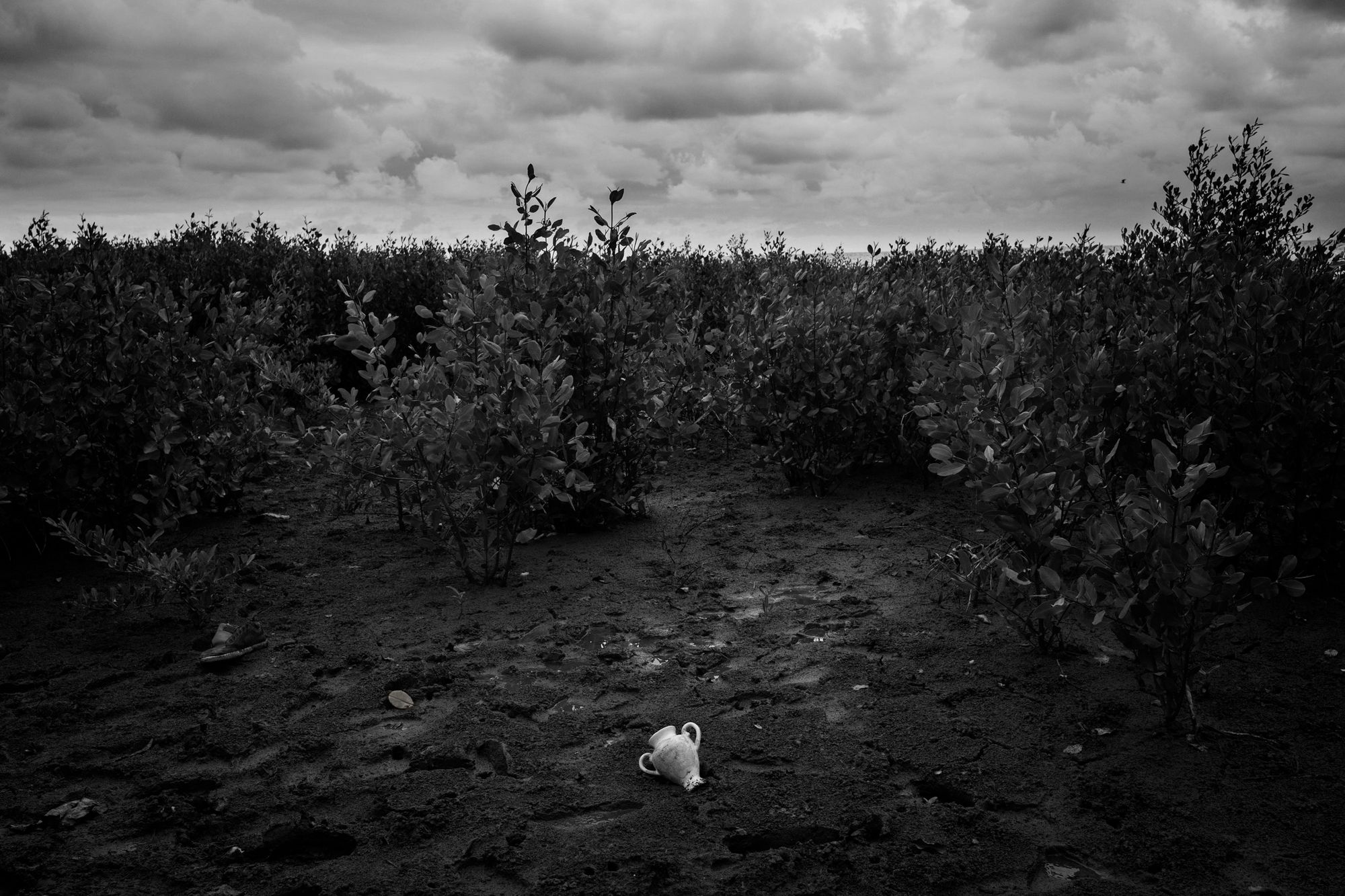
A small amphora found in a magroove at the Sepétiba Beach. Known as "Quartinhas"in Brazil, these jars are largely present in the African cult.

In the recent years, the Sepetiba Beach is hosting the main kite festivals of the city. The community continues to rebuild and reinvent their own lives, despite abandonment by the government.